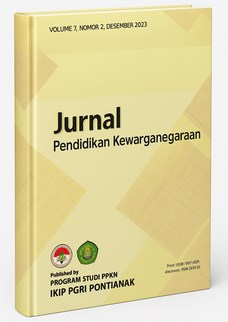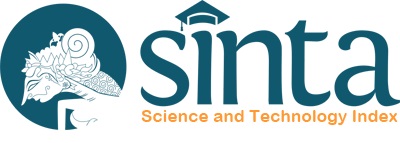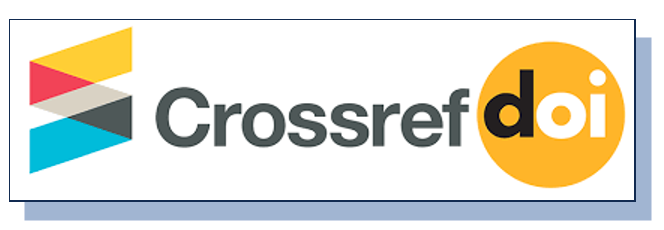The Effectiveness of Interactive PowerPoint Media in Civics Education for Grade XI Students of SMAN 3 Sungai Kakap
DOI:
https://doi.org/10.31571/jpkn.v9i1.9018Keywords:
Learning Media, Interactive Powerpoint, Learning Outcom, Civics EducationAbstract
This research focuses on evaluating the impact of interactive PowerPoint media on the learning outcomes of Grade XI A students. Utilizing the Classroom Action Research (CAR) method, the study was carried out in two cycles, each involving planning, execution, observation, and reflection. In the first cycle, PowerPoint was used in a conventional manner, which led to minimal student involvement—only 5 out of 26 students (19.23%) met the learning criteria. After evaluating the results, the second cycle introduced more interactive features, such as animations, contextual visuals, hyperlinks, and guiding questions, alongside more participatory teaching methods. This approach significantly increased engagement, with 76.92% (20 out of 26) of students achieving the Minimum Mastery Criteria (KKM). The study concludes that interactive PowerPoint enhances student-centered learning and aligns with 21st-century educational goals. Its innovation lies in applying interactive media specifically to civic education (PPKn), traditionally taught through lectures, thus fostering greater student interaction and improved academic performance.
Downloads
References
Arikunto, S. (2014). Prosedur Penelitian Suatu Pendekatan Praktis, 2–3.
Diantari, and . Asri. (2014). “Pengaruh Penerapan Model Pembelajaran Tuntas (Mastery Learning) Berbentuk Media Powerpoint Terhadap Hasil Belajar IPS Siswa Kelas V SD Negeri 2 Tibu Beneng Kuta Utara-Bandung.” MIMBAR PGSD Ganesha 2 (1 SE- Articles). https://doi.org/10.23887/jjpgsd.v2i1.3079.
Filayati, M., & Suprayitno. (2016). Penggunaan Media PowerPoint Untuk Hasil Belajar Guru. Jakarta: Rajawali Pers.
Gagne, R. M., & Briggs, L. J. 1979. “Principles of Instructional Design.” Holt, Rinehart and Winston., 241–70. https://doi.org/10.1525/9780520341302-010.
Heinich, R., Molenda, M., Russell, J. D., & Smaldino, S. E. 2002. Instructional Media and Technologies for Learning. Merrill. https://books.google.co.id/books?id=2w1nQgAACAAJ.
Iriawan, Sandi Budi. 2019. Pembelajaran di SD Berbasis TIK. Jakarta:Kementerian
Lutfiyanto, A. D., Wahid, F. S., & Nurpratiwiningsih, L. (2023). Pengaruh Media PowerPoint Interaktif Terhadap Minat dan Hasil Belajar Matematika Siswa Kelas IV SDN Gandasuli 01. Pendas: Jurnal Ilmiah Pendidikan Dasar, 10(1).
Maesa, R., Rachmawati, D., & Utami, I. D. 2022. “Efektivitas Penggunaan Media PowerPoint Dalam Pembelajaran Matematika.” Journal of Education and Curriculum Collaboration (JECCO), 2(1), 27–35. 1 (2): 67–76.
Maryam, E. G., & Bahfen, M. (2023). Menarik Perhatian Murid Menggunakan Strategi Presentasi PowerPoint Interaktif. SEMNASFIP. https://jurnal.umj.ac.id/index.php/SEMNASFIP/article/view/24159
Rusman, dkk. (2011). Model-Model Pembelajaran: Mengembangkan Profesionalisme Siswa Sekolah Dasar. https://garuda.kemdikbud.go.id/documents/detail/1580038
Suyahman. (2021). Media Belajar PPKN SD. Klaten: Lakeisha.
Wirnawa, Ketut, and Putri Sukma Dewi. 2022. “Efektivitas Media Pembelajaran Power Point Untuk Meningkatkan Hasil Belajar Siswa Sma Negeri 1 Gedongtataan Di Era Pandemi Covid 19.” Jurnal Ilmiah Matematika Realistik (JI-MR 3 (2): 109–13.
Yudi Budianti, R., Rikmasari, D. A., & Oktaviani, D. A. 2023. “Penggunaan Media Powerpoint Interaktif Untuk Meningkatkan Hasil Belajar Siswa Sekolah Dasar.” Jurnal Inovasi Pendidikan Dan Pembelajaran Sekolah Dasar 7 (1): 127. https://doi.org/10.24036/jippsd.v7i1.120545.
Downloads
Published
How to Cite
Issue
Section
License
Copyright (c) 2025 Syarif Firmansyah, Hemafitria Hemafitria, Suci Maelliya Angraini, Wahyuda dwi handoko (Author)

This work is licensed under a Creative Commons Attribution-NonCommercial-ShareAlike 4.0 International License.
Authors who publish with this journal agree to the following terms:
Authors retain copyright and grant the journal right of first publication with the work simultaneously licensed under a Creative Commons Attribution License (CC BY-NC-SA 4.0) that allows others to share the work with an acknowledgment of the work's authorship and initial publication in this journal.
Authors are able to enter into separate, additional contractual arrangements for the non-exclusive distribution of the journal's published version of the work (e.g., post it to an institutional repository or publish it in a book), with an acknowledgment of its initial publication in this journal.
Authors should sign the copyright transfer agreement when they have approved the final proofs sent by Jurnal Pendidikan Kewarganegaraan prior to the publication.

 Download: 15
Download: 15















